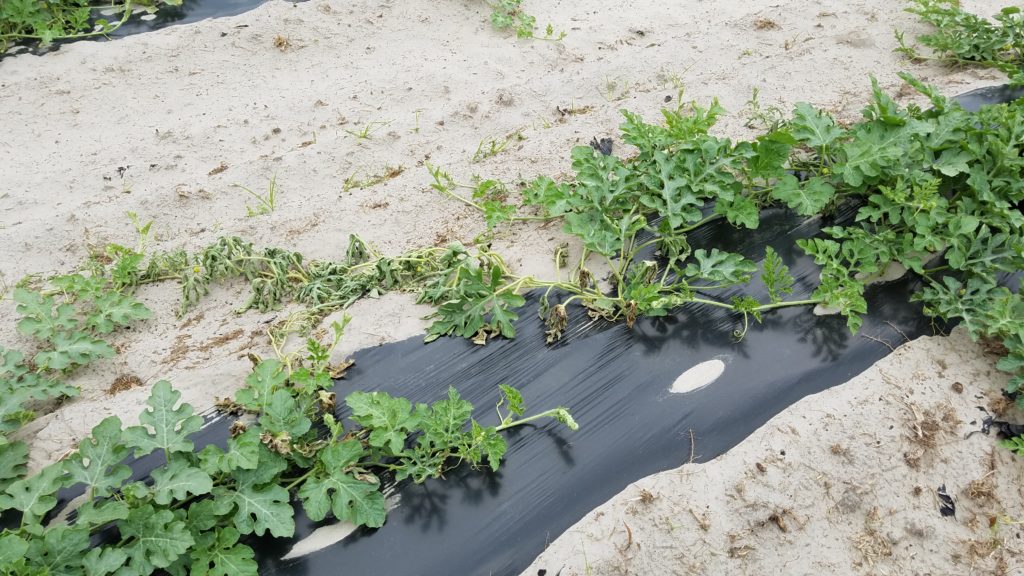
By Clint Thompson
North Florida watermelon producers should be wary of increased potential for fusarium wilt disease with planting season looming.
The current El Niño weather pattern is offering cooler temperatures and wetter conditions, says Nick Dufalt, a plant pathologist with the University of Florida Institute of Food and Agricultural Sciences.
“I think being cooler always promotes fusarium wilt. Having more cloud cover, which is what happens with El Niño, that also promotes fusarium wilt. It’s where we’re not getting those high extreme temperatures, and we’re not seeing it warm at night,” Dufalt said.
North Florida producers capitalized last year with earlier plantings in late February. They enjoyed earlier harvests and better market prices. But planting earlier also promotes the disease.
“If you don’t have a field that has a fusarium wilt problem then you’re probably not going to see it this year. But if you do have one that has a problem, the earlier you plant it the more likely it is to have fusarium wilt out there,” Dufalt said. “It has to do with a couple of factors; 1) you’re in cooler environments that promote the fungus; 2) watermelons tend to grow a little bit slower in earlier plantings. The longer it stays in that small stage the more likely it has a chance of coming in contact with the fungus.
“No matter what, you’ve got to compare the market window to the disease. You’ve got to put all of those things together. If you have a field that has fusarium wilt, if you save and push even five days back, that’s better than finding it five days earlier.”
Management Options
There are multiple management options available besides relying just on fungicides, which Dufalt does not recommend. Using grafted plants offers the best option. Growers should utilize healthy transplants and those varieties that are resistant to the disease.










